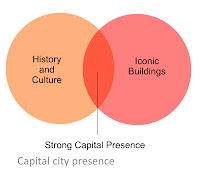Canberra - The Place to Be? Or Not?
We have identified a lack of international presence for our countries capital and a lack of national and international interest.
When looking at the parliamentary functions we defined some key issues of education and lack of public involvement. --> Public Involvement
Architectural Solution space/spaces for public consultation and observation of decisions.
The Question was posed that if legislation is for the people then why aren't the people of Austalia and their views properly represented in federal parliament?
Our solution is to create a public presence within the federal parliament by an architectural inssertion.
This 'architectural entity' is not only going to be a base for public forum but will boost the international presence of Australian federal parliament and Canberra as a whole.











